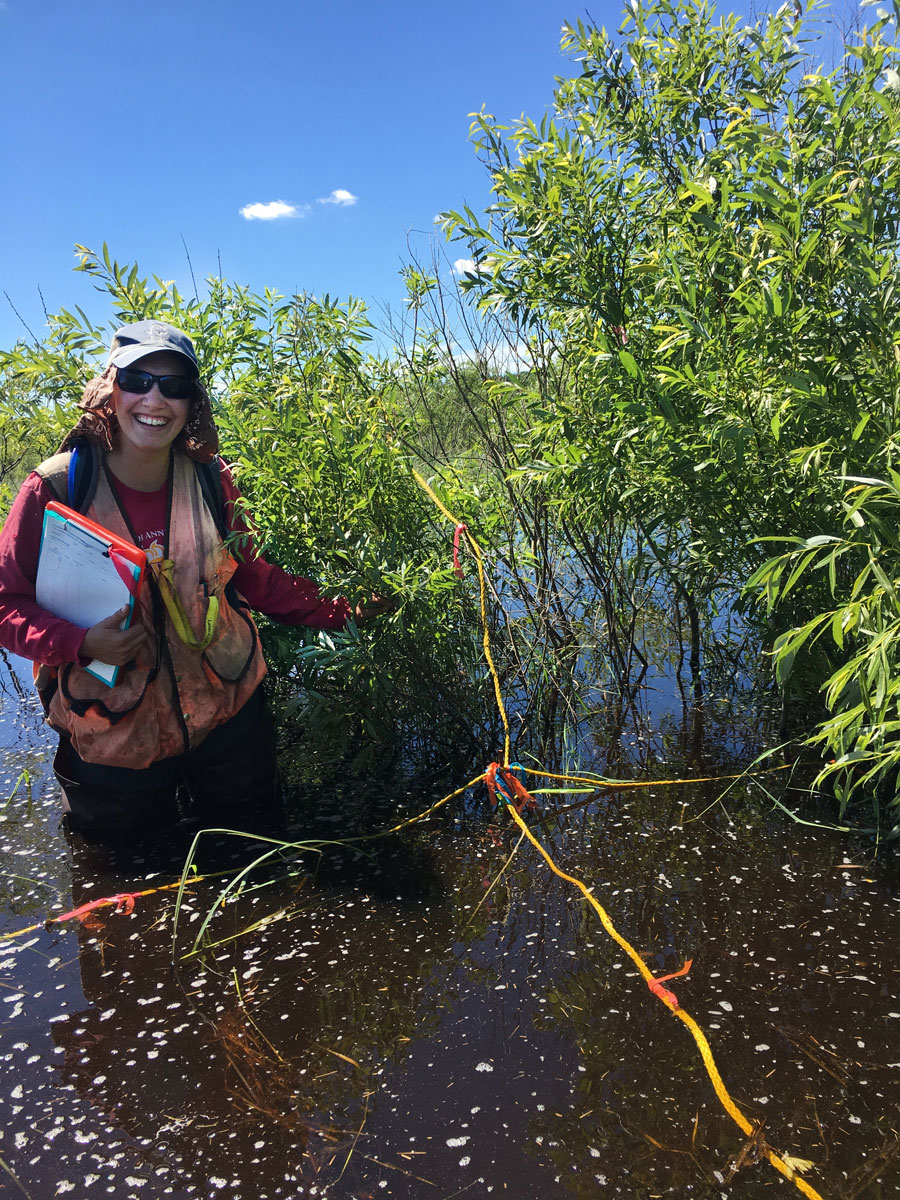
Lori Knosalla is part of an MITPPC-funded team led by forest ecologist Peter Reich. Check out this profile's companion piece, "Cover it Up."
SPOTLIGHT SERIES
Citizen Science Program Coordinator | she/her/hers
Can you give a quick overview of your work with MITPPC?
I joined the "Cover It Up!" research team in May 2019 to lead the new citizen science component of the project. The project explores how we can use native Minnesota plants to suppress buckthorn regeneration following buckthorn removal efforts.
To date, our research has taken place in forests around the greater Twin Cities, but we know that buckthorn is present in almost every county in Minnesota. Through the citizen science program, we are taking what we’ve learned so far and applying it across the state in a wide range of environments. Participants in the project will remove buckthorn from a small forested area on their property, or in a park where they volunteer, or in a forest they manage. After the removal, participants will plant a mix native species in experimental plots using a seed mix we provide. Each summer between 2020-2022, participants will collect observations and report their findings back to us.
About the Author
Maggie Nesbit is a Communications Intern with the Minnesota Invasive Terrestrial Plants and Pests Center (MITPPC). She is a double major in English and Strategic Communications at the University of Minnesota. In her spare time, Maggie enjoys running, hiking, reading and spending time with friends and family. Maggie's position is funded by a grant from the Minnesota Soybean Research & Promotion Council.